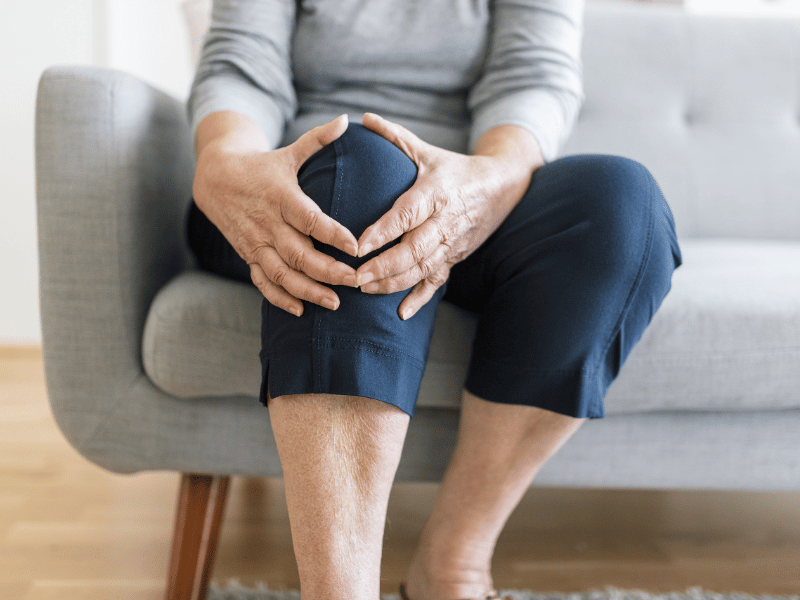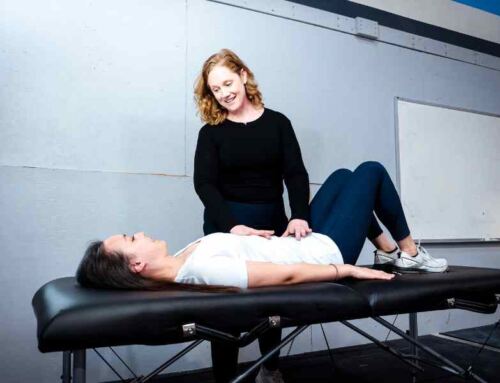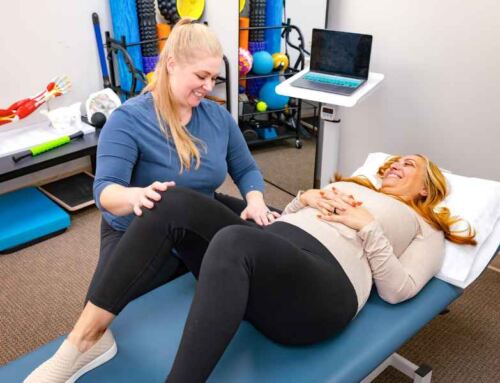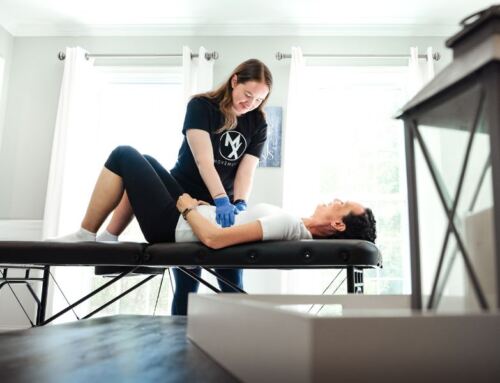Reclaiming Your Body in Menopause: The Power of Pelvic Health Physical Therapy
“I am in such a dark place, Stephanie.”
I was talking to one of my friends on the phone. She had just turned 45 and was struggling with fatigue, depression, weight gain, and mood swings.
“I don’t know what’s wrong with me. I don’t feel like myself. None of the doctors have answers.”
About 6 months after this phone call, my friend was given a diagnosis for her mental and physical health struggles.
Menopause.
And it was one of our friends—a pelvic health physical therapist—who suspected menopause as the culprit of her symptoms.
Menopausal women are a forgotten population in healthcare. And many providers, including OB/GYNs are inexperienced in treating the symptoms of menopause holistically. Much of this is due to the lack of research in women’s health and the societal practices of downplaying the symptoms of this important part of the female reproductive life cycle.
In this blog post we will explain what menopause is, the impact of hormones on menopause, the common musculoskeletal problems and pelvic health conditions that can arise during menopause and how a pelvic health physical therapist can lessen the suffering during this phase of life.
What is Menopause?
Menopause occurs when there is permanent suspension of menses due to a decline in hormones and absence of ovarian functioning. For a woman to be in menopause, she must have an absence of a menstrual period for 12 consecutive months. The mean age that women undergo this transition is 48.8 years of age.
Perimenopause is a period of ovarian decline and hormonal disruption that begins with the onset of menstrual cycle irregularities (+/- 7 days) or other menopause symptoms and extends beyond the final menstrual period to include 12 months after menopause, thus lasting 1 year longer than the menopause transition. Perimenopause usually occurs between 40 and 58 years of age.

The Impact of Hormones on Menopause
Menopause is characterized by the significant decline of hormones, most notably estrogen and progesterone, leading to physiological changes that affect many body systems including the cardiovascular system (heart, lungs, arteries/veins), nervous system (brain), musculoskeletal system (bones and muscles), digestive system (liver), and the integumentary system (skin).
It is the loss of estrogen that can lead to symptoms that negatively affect quality of life (like vaginal dryness, night sweats and hot flashes) and increase one’s morbidity and mortality (including the risk of cardiovascular disease, hypertension, osteoporosis, fractures, obesity, and dementia).
Decreases in estrogen can lead to vaginal dryness, pain during intercourse (dyspareunia), night sweats, hot flashes, osteoporosis, weight gain, loss of muscle mass (sarcopenia), joint pain and stiffness, musculoskeletal pain, pelvic floor dysfunction, urinary tract infections, urinary incontinence, pelvic organ prolapse, hypertension, atherosclerosis, and mood disorders. In fact, there are over 400 symptoms that one can experience during menopause and just like in pregnancy, each person’s experience is unique. This is one of the reasons menopausal symptoms can be difficult to treat.
Genitourinary Syndrome of Menopause
Pelvic floor issues are common during menopause and many providers dismiss symptoms like vaginal dryness, dyspareunia, pelvic floor dysfunction, constipation, pelvic pain, urinary tract infections, urinary incontinence, and pelvic organ prolapse as conditions that come with aging. However, this is untrue.
The pelvic floor issues that are exacerbated during menopause are referred as a collective to “genitourinary syndrome of menopause.” This syndrome develops due to a decline in hormone levels that accompany menopause, providing the ideal environment for the development of pelvic floor hypertonus or “pelvic floor tightness.”
Pelvic floor muscles are rich with estrogen receptors and are more sensitive to the decline in hormones compared to other skeletal muscles. Hormone deficiencies cause a reduction in the elasticity of musculature, leading to decreased muscle strength, increased connective tissue density, and decreased blood circulation, contributing to the development of stiff and weak muscles with restricted range of motion.
This is why women typically experience exacerbation of pelvic floor symptoms when they reach their 40s. Luckily, evidence suggests that early intervention by a pelvic health physical therapist prior to the menopausal years can modify the risk of developing genitourinary syndrome of menopause. If a woman is already in menopause or is post-menopausal, pelvic health physical therapy in conjunction with topical vaginal estrogen can improve symptoms and quality of life.
Common Musculoskeletal Problems During Menopause
Musculoskeletal pain is present in more than half of perimenopausal women and the loss of estrogen can exacerbate pain issues that previously did not affect quality of life. Common musculoskeletal problems that may manifest or worsen during menopause include osteoporosis, osteoarthritis, fibromyalgia, frozen shoulder, joint stiffness, back pain, hip pain, sacroiliac joint pain and headaches.
Approximately 50% of women over the age of 50 will experience an osteoporosis-related bone fracture. During perimenopause, bone strength and bone density decrease. In fact, during this period, a woman can lose up to 6% of her bone mass, putting her at risk for hip, wrist, and spine fractures.
Joint pain has been shown to be maximal in women aged 45-55 years. Many women who experience joint pain will not have an associated joint disorder (like osteoarthritis) so it is thought that pain experience during this time is related to the decline in hormones. Fortunately, exercise has been shown to improve joint pain from perimenopause. A physical therapist can provide women guidance on an individualized graded and gradual exercise plan that focuses on improving range of motion, balance, strength, and mobility so the symptoms of menopause are addressed holistically and personalized to you and your goals.

Weight Gain in Menopause
Weight gain and weight redistribution are common side effects of menopause and are frequent reasons perimenopausal women seek treatment. While it is understood that the loss of estrogen redistributes fat to the abdomen, it is unclear why weight gain occurs. Recent studies suggest that perimenopausal weight gain is likely related to natural aging and lifestyle factors. Poor sleep habits, decreased activity level, and increased caloric intake combined with a slower metabolism during the perimenopausal period are thought to exacerbate weight gain.
Physical therapists are well positioned to help women minimize the effect of weight gain during the perimenopausal period. Resistance exercise, such as strength training, increases lean body mass and bone strength, decreases fat mass, and limits cognitive decline. Aerobic exercise helps to minimize cardiovascular risk factors that can be exacerbated during menopause. In fact, women can lower their cardiovascular risk of death by 80% with as little as 30 minutes per day of moderate intensity physical activity (i.e. brisk walking). Regular exercise can also improve sleep quality.
Effective Treatments to Minimize Menopausal Symptoms
The best time to modify risk factors for the conditions described above is in the years prior to and immediately following menopause. However, it is never too late to seek out treatment. Studies have found that women who begin an exercise program in their 60s, 70s, or even in their 80s can slow the effects of bone loss, muscle loss, and loss of mobility.
Hormone therapy is a first line treatment for many of the physiological symptoms women experience during menopause including hot flashes, vaginal dryness, mood disorders, and cardiovascular risk factors. Hormone therapy can be systemic or topical and includes estrogen therapy, estrogen-progestogen therapy, and estrogen-receptor agonists and antagonists. These medications must be prescribed by a nurse practitioner or physician. A pelvic health physical therapist is in an ideal position to make this referral for patients who need more intervention than lifestyle changes alone.

How a Pelvic Health Physical Therapist Can Help
The loss of estrogen is the primary reason women experience the systemic effects of menopause. It affects all body systems, including the musculoskeletal system. But do not fear! Just because these symptoms can occur, doesn’t mean you have to suffer. A pelvic health physical therapist can help minimize the effects menopause has on your quality of life and how you move!
Pelvic health physical therapists are experts in treating a variety of conditions that are exacerbated during menopause including:
- Bladder/Bowel frequency, urgency and/or incontinence
- Pelvic organ prolapse
- Constipation
- Pelvic pain
- Pain during sex (dyspareunia)
- Sexual dysfunction
- Pelvic floor tightness
- Pelvic muscle weakness
- Vaginismus
- Vulvodynia
- Other musculoskeletal pain problems that result due to hormone imbalances (osteoporosis, osteoarthritis, fibromyalgia, frozen shoulder, joint stiffness, back pain, hip pain, sacroiliac joint pain and headaches)
A dedicated pelvic floor physical therapist at MovementX in Billings offers personalized interventions to effectively address pelvic floor and orthopedic conditions that may be exacerbated from menopause. During your assessment with your pelvic floor PT, a comprehensive movement-based evaluation will be conducted to identify the underlying causes of your condition. In some cases, clients may find value in consenting to an internal pelvic examination, allowing for a thorough assessment of pelvic floor muscle mobility, tension, and strength.
Beyond focusing solely on the pelvic floor, the assessment encompasses a full body evaluation–including hip, rib cage, and spinal mobility, flexibility, posture, joint range of motion, and strength deficits, all of which can contribute to the symptoms you are experiencing. Your pelvic floor PT will delve into your medical and surgical history, toileting habits, nutrition intake, and physical activity, creating a holistic understanding of your condition.
Once the factors contributing to your condition are identified, your MovementX pelvic floor PT will transparently explain their findings and outline the rationale behind recommended treatments. A range of interventions may be employed, including soft tissue mobilization, dry needling, joint mobilization, stretching, strengthening exercises, postural modifications, adjustments to daily activities, and trigger point release.
Conclusion
Menopause is a transformative stage in life, but it doesn’t have to be synonymous with suffering. From pelvic floor dysfunction to musculoskeletal pain, many of the symptoms women experience can be managed, improved, and even prevented with the right interventions. When my 45-year-old friend faced a cluster of unknown symptoms that affected her physical and mental health, it was a pelvic health physical therapist who recognized that menopause was the culprit. A pelvic health physical therapist can be a key ally during menopause, providing personalized care that addresses not just the symptoms but also the root causes of discomfort.
At MovementX in Billings, our pelvic health physical therapists are uniquely equipped to help women navigate the changes of menopause with confidence and strength. Whether you’re dealing with pelvic floor issues, joint pain, or weight gain, we focus on improving your overall well-being through evidence-based treatments, tailored exercise programs, and holistic care.
Menopause is an inevitable phase, but with the support of a skilled pelvic health physical therapist, you can regain control of your body, enhance your quality of life, and embrace this new chapter feeling empowered, not burdened. Don’t hesitate to seek support—your future self will thank you.








